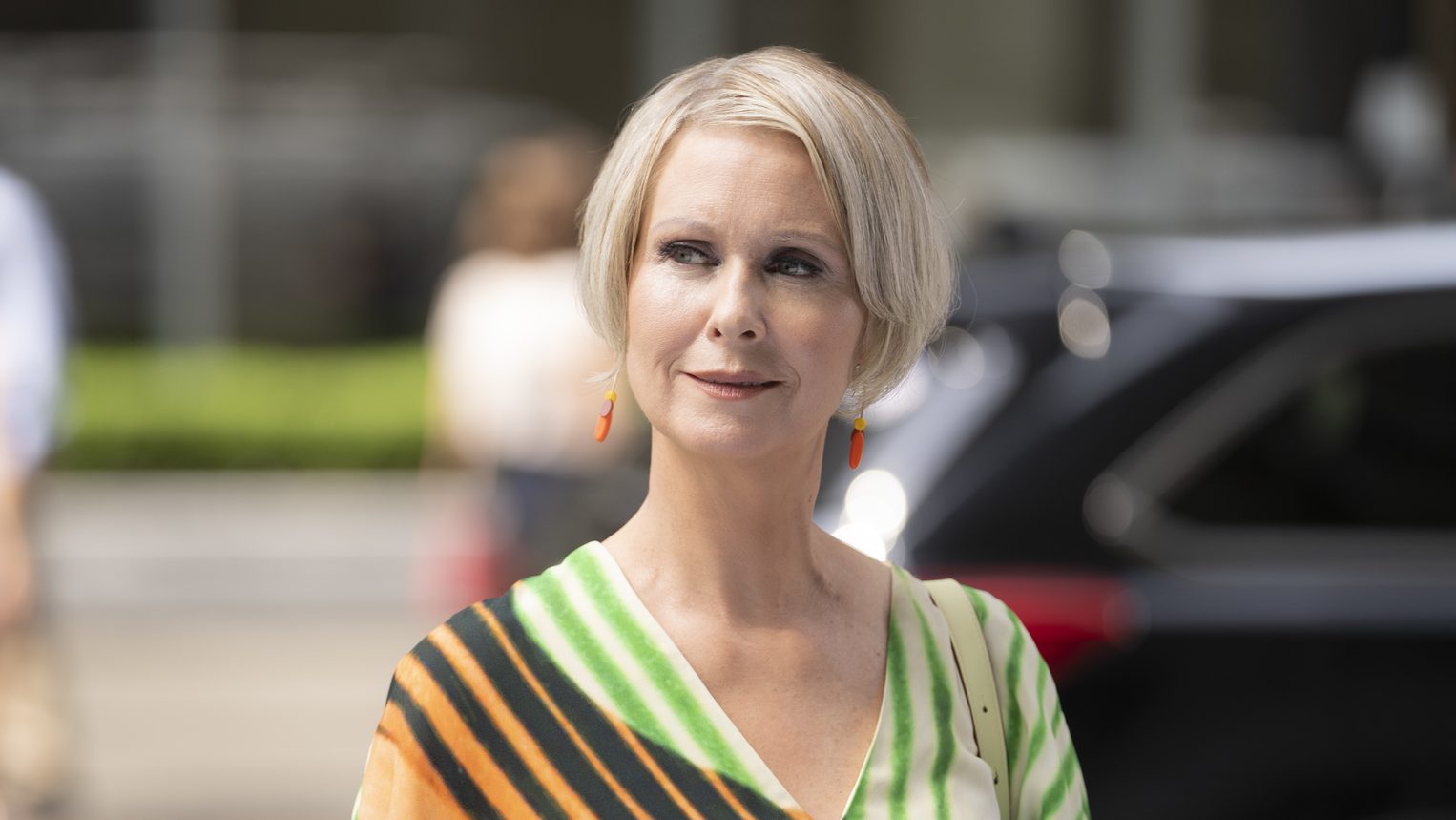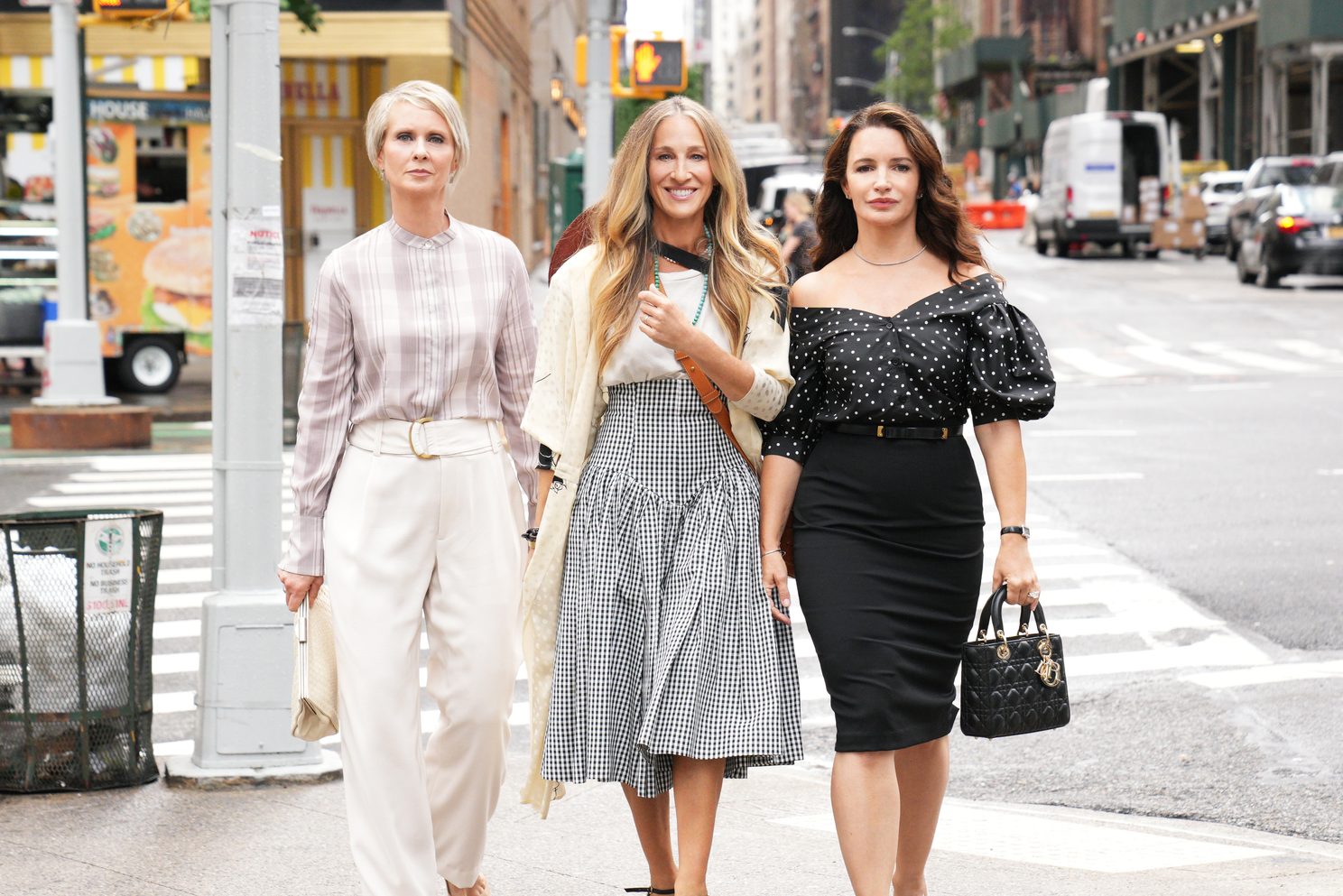

A lot has been said—or, you know, posted—about the way the characters in HBO’s new Sex and the City follow-up have aged. Which is to say, how the women playing them have aged; the choices they’ve made about their appearance, whether they’ve had cosmetic surgery, etc. Star and executive producer Sarah Jessica Parker even commented on the “misogynist chatter” online in a recent profile. “‘Gray hair gray hair gray hair. Does she have gray hair?’ I’m sitting with Andy Cohen and he has a full head of gray hair, and he’s exquisite. Why is it okay for him? I don’t know what to tell you people!”
Gray hair. God help me, that’s what I want to talk about. Or, actually, not so much gray hair as the absence of red hair.
Parker is right, obviously. Women, particularly those in the public eye, exist in this impossible double-bind: as they age, they’re either criticized for looking too old or for the cosmetic procedures they choose to have. There was literally a Samantha (Kim Cattrall) storyline about this in Season 5, which I’ve only just remembered. So, to be clear, I’m not interested in being prescriptive about what the women on And Just Like That… “should” look like or in critiquing what they’ve chosen to do or not do to their bodies.
But since the very first promo images of Cynthia Nixon, Sarah Jessica Parker and Kristen Davis started appearing online, I’ve been thinking about a particular aesthetic trope: the blonde, brunette and redhead as a sort of holy trinity of female archetypes. It’s an oft repeated motif in film and TV going all the way back, apparently, to The Andrews Sisters. The most recognizable example is probably Cher, Susan Sarandon and Michelle Pfeiffer in The Witches of Eastwick, but we’ve seen it more recently in Mad Men and the first season of Big Little Lies and, briefly, in Being the Ricardos. It’s an oddly pleasing visual troika, which the original Sex and the City satisfied via Carrie’s trio of BFFs: blonde Samantha, brunette Charlotte and red-haired Miranda.

Of course, these characters represented types, so it’s hard to imagine that the color of their hair wasn’t intentional. Samantha was the blonde bombshell; Charlotte, while not exactly mousy, was the most reserved and traditional; and Miranda was, for much of the series, the angriest, the most fiery. Interestingly, and perhaps unsurprisingly, you never see trios of men grouped in this way. Male characters, after all, have the privilege of being fully rounded and not reduced to easy categories like the slut, the prude and the ball-buster. As Sex and the City author Candace Bushnell pointed out in a recent interview, “The first thing men do is categorize women into types. That’s how you sell things.” That certainly seems to be what the cis male creator and showrunner of Sex and the City did when they cast the show.
In the new series, however, Miranda’s hair is no longer red. Nixon, a natural blonde, sports gray hair in And Just Like That… (Though recent video of Nixon filming a scene with the actor who plays Miranda’s son shows her in what appears to be a red wig.) Without having seen the show yet, it’s hard to say what’s behind the choice. Was it Nixon’s call to not dye her hair, or is this part of Miranda’s character arch? That remains to be seen, but it does make a certain sense for the character. She’s a working mother and has always been the most down-to-earth of Carrie’s inner circle.

But I would hazard to guess that there’s even more to it than that. So much of the project of And Just Like That… seems to be about shaking off aspects of the original show that seem objectionable in retrospect. The new series has added four women of color as series regulars to correct for Sex and the City’s relentless whiteness. (And, of course, it has to be acknowledged that the blonde-brunette-redhead thing tends to be an extremely white phenomenon.) Is it too much to hope that the show’s writers have also jettisoned the rigid categories into which Charlotte and Miranda so often fell? Even over the course of the original series’ six seasons, the characters deepened and changed, letting go of some of their more artificially defining traits. Judging from the official trailer and a Miranda-focused teaser that surfaced on Instagram this week, Miranda is still Miranda in And Just Like That… But the gray hair may be a signal that we shouldn’t approach this new story thinking of her as the feisty, cynical type she once was.
Still, looking at the photos of Carrie, Miranda and Charlotte from this latest incarnation of Sex and the City, I can’t help but feel an involuntary pang of disappointment, of longing for Miranda’s red hair. The trifecta—with Carrie now filling the blonde role—just feels incomplete, like an unresolved chord. Some tropes are hard to let go.














